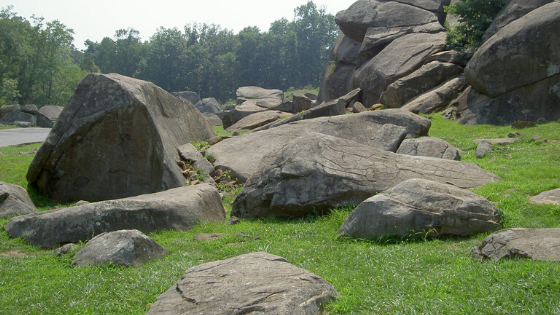This post contains affiliate links. For more information, please see my Terms of Use and Disclosure Policy page. Thank you.
James Longstreet, the "Old War Horse" of General Robert E. Lee, was one of Lee's most trusted officers and also at the center of controversy towards the the end of and after the American Civil War. Longstreet was born in South Carolina, spent many of his early years in Georgia, and graduated from West Point fifty-fourth of sixty-two cadets. Similar to other officers who served in the American Civil War, Longstreet first saw military action in the war with Mexico and then in the Indian Wars. He joined the Confederate Army in 1861 and quickly rose in ranks.
Series of Battles
Longstreet participated in a number of battles including the Battle of the Seven Pines (or Fair Oaks) where verbal orders were misunderstood and Longstreet's division was on the wrong road. This led to a delayed attack. At this battle, General Johnston was seriously wounded and General Lee replaced him as leader of the Confederate Army. With the battles of Glendale and Malvern Hill a few days later, Longstreet quickly became Lee's right-hand man. At other battles such as second Battle of Manassas, Antietam, and Fredericksburg, Longstreet continued to prove his worth.
Before Gettysburg
On June 28, 1863, a scout of Longstreet brought news that the Army of Potomac was north of the Potomac River. In addition to the location of the Union Army, news was also brought that George Meade was the new commander of the Army of the Potomac.
Longstreet felt that the Union line was too strong. He urged Lee to get between the Union Army and Washington D.C. Longstreet was a man who preferred a tactical defensive approach. There was no way that Lee would listen to Longstreet's suggestion as it would be seen as a retreat. The morale of Lee's veteran troops was at an all-time high. While discussing matters with Longstreet, Lee pointed to Cemetery Hill and said that was where they would attack the enemy. Longstreet felt there would be disaster.
The Second Day
The principal attack of the South would be left to Longstreet on July 2, 1863. He was to attack the Union left while holding the end of Cemetery Ridge.
Longstreet was the only non-Virginian holding a high command in the Army of Northern Virginia. Due to his action, or delayed actions, he was held responsible for losing the Battle of Gettysburg. Those who defended the Lost Cause blamed him for moving too slowly. Lee wanted Longstreet to attack early but he didn't get into position till 4 pm. Some blamed Longstreet for sulking and dallying but, in reality, Longstreet's two divisions had just completed two night marches and were tired.
The Union were not at Cemetery Ridge because Commander Dan Sickles had moved the troops one-half mile forward to higher ground at Devil's Den. This left the Union unconnected to the rest of the Union line and Longstreet attacked. There was fighting in locations that would become famous - the Peach Orchard, the Wheatfield, Devil's Den, and Little Round Top.
 |
| Devil's Den |
There was a struggle at Little Round Top and General Gouveneur K. Warren saw the Confederate troops coming and warned the Union men. This led to the defense of Little Round Top by the 20th Maine and Chamberlain. The Confederate assault on July 2 ended up being uncoordinated but Lee felt one more push would win the battle. Longstreet tried to talk Lee out of the attack on July 3 but did not succeed. Longstreet was ordered to attack the Union center with Pickett's division and two of Hill's divisions on the third of July 1863.
The Third Day
On July 3, 1863, in the early afternoon, there was an artillery duel of 150 guns from both the Confederates and Union. The roar of the cannons could be heard as far away as Pittsburgh. The Confederates did not do much damage to the Union line because their aim was too high.
At three p.m., Longstreet ordered the attack which would become known as Pickett's Charge. The three divisions of Pickett and six divisions of Hill would stretch about a mile across the field. They marched about 3/4 of a mile across an open field to meet the Union line. About 14,000 men went across the field but only half returned. Longstreet and Lee had to prepare their defenses for an attack that never came from the Union Army.
 |
| image from wpclipart.com |
Aftermath
Longstreet would continue to state that Lee's decisions at Gettysburg were not the correct ones. His continual opposition to Lee in regards to Gettysburg would cause problems for Longstreet after the Battle of Gettysburg and after the American Civil War. He also supported the Republican Party. The criticism of Lee and a number of other factors left him open to attacks from the Lost Cause but he was well remembered by the men who served under him.






No comments:
Post a Comment